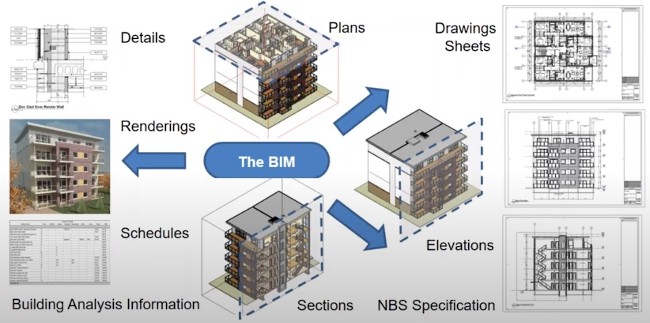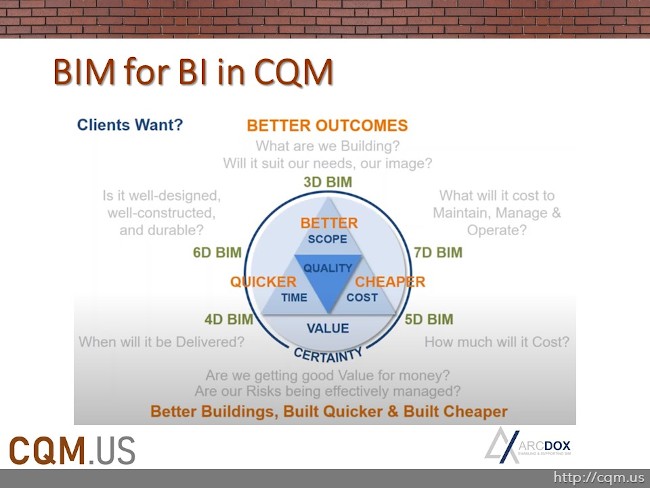Building Information Modeling or BIM in CQM for a Lean Construction Project Management Professional setting is essential for a high-quality Construction Project success. BIM is about gathering quality Information for Buildings and Built Infrastructure that is considered part of CQM Assets and brings Value to the CPMP for Effective Integrated Project Delivery, Preventative and Proactive Quality Actions, and fast Business Decision Makings!
Quality BIM in CQM Information has the following characteristics:
- It is Digital that could be used and reused by other entities
- It is in Searchable format that is Accessible with ease
- It is current and Accurate with up-to-date information
With proper Digital Information Strategy adopted in the early stages of Pre-Construction by the Sponsor and A/E team, the proper integration of BIM in CQM will help to fully realize all the potential benefits of BIM in a Construction Project.

With the advancement in technology and innovation in Construction Information Technologies, Owners must require Architects to move from Analogue (Paper-based) CAD PDF drawings to a more Digital 3D BIM designs to improve Quality Integration and bring the most value for their money. 2D Drawings and Specifications on papers produce Duplication of Effect, Excessive Checking, Labour Intensive checking, Cost & Time Consuming manual coordination that is outdated and has the highest risk of delivering a bad quality project with long disputes and possible litigations.
Furthermore, upon completion of the construction project, the owner would not have a 7D BIM system that has Facility Management and Operation Management capabilities.
If proper BIM Modeling is utilized in a Construction Project, the information produced in the BIM system will be very beneficial for the Business Intelligence needed to have a better CQM system.

The key point is that the use of BIM in a CQM Methodology is based on an IPD approach that derives Construction Project Documents from a Virtual Building Information Model rather than a traditional 2D to 3D BIM approach, therefore it is more efficient for better Quality Documentations and Outcomes!
Single Model for BIM in CQM
In many countries moving to a BIM strategy for Construction Projects is becoming mandatory on Public Projects and it’s surprising why the United States is falling behind. For example, in 2011 the United Kingdom has mandated the use of Level 2 BIM Maturity for all Public Projects by 2016. However, Level 2 BIM is also becoming obsolete since it was developed from separate models into a 3D coordination for 4D Time Sequencing, 5D Cost Control, 6D Sustainability Analysis, and lastly 7D for Facilities Management.
Therefore, Level 2 BIM Modeling isn’t produced based on LEAN Principles of eliminating waste through define, value, flow, pull, improve, and redefine cycle. Using a single BIM Model eliminates the Eight sources of wastes:
- Transport of Digital Information Communication
- Reducing Inventory Depositories of Accessible Information
- Increasing Motion by Virtual Designs and Web-meetings
- Reducing Wait for Accurate and Current information
- Reduce Over-processing of information by working off of one model
- Eliminate Over-production of information in separate models
- Eliminating Defects through working collaboratively
- Lack of focus on the proper use of Team Members’ Skills
For more information on the benefits of BIM in a LEAN approach, watching the ARCDOX webinar is highly recommended. In the next section, a practical best practice recommended by CQM Framework which provides the environment needed to integrate BIM for CQM Methodology will be discussed.